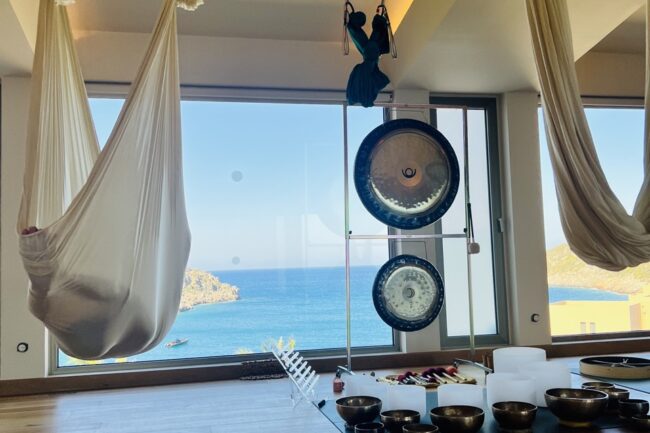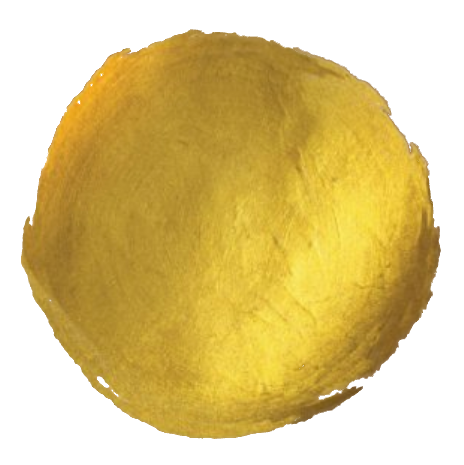So, perhaps you’ve heard about sound healing and sound baths, or maybe a friend raved about how powerful their experience was and now you’re curious to try one yourself. It’s true — there’s a lot of buzz around sound healing and sound baths these days. By the way, you can learn more about sound healing here and sound baths here.
When I was first introduced to sound healing nearly 10 years ago while living in Berlin, it wasn’t as popular as it is today. Back then, when I held sound baths with my teacher, we’d have maybe 10 to 12 people attending — sometimes even fewer. But over the years, sound healing, especially in group settings, has grown tremendously in popularity around the world.
This rise is partly because there are more sound healers out there, and partly because people are seeking effective ways to relax, release stress, and reconnect. Group sound baths are also an accessible entry point — affordable, welcoming, and powerful.
That said, it’s important to be mindful of where and with whom you choose to experience one. Attending a sound bath led by someone without proper training or sensitivity can sometimes do more harm than good. I have heard several times people saying that had bad past experiences when the sound therapist was banging the instruments causing them stress instead of relaxation and even headache. So do your research before joining a class.
After facilitating hundreds of sound baths in various countries and settings, I’ve come to realize that there are specific things people should know before attending a sound bath session — things that facilitators sometimes forget to mention, or simply overlook.
So, what should you consider before attending a sound bath therapy?
1. Do Your Research
First and foremost, I suggest taking a moment to learn about the sound therapist who’s facilitating the session. Read their bio, check their qualifications, and if they’re on Instagram or YouTube, watch a few videos to get a feel for their energy and approach. See if it resonates with you. Also, read reviews or testimonials from past attendees if available. Send them a message with any questions you may have about the sound bath and see how they reply.
And most importantly — trust your intuition. If something feels off, it probably is — and that’s okay. Find someone else.
2. Which type of Sound Bath Should You Attend?
Nowadays, there are so many variations out there. From gong baths — where the sound healer mainly uses gongs — to more traditional sound baths that feature a variety of sound healing instruments like Tibetan singing bowls, crystal bowls, gongs, frame drums, and more… the sky is the limit. You might have heard of aerial sound baths, where attendees lie in hammocks and feel like they’re floating in a womb-like cocoon, or floating sound baths, where participants literally float in water, receiving the vibrations of the bowls through the water itself. There are also crystal sound baths, where the facilitator uses only crystal instruments, and yoga & sound sessions, which combine yoga practice with sound healing. Some sessions include breathwork and sound, where participants engage in conscious breathing while being immersed in sound.
You might have also come across full moon sound baths, held during a full moon when the energies are believed to be heightened, or new moon sound baths, which focus on setting intentions for new beginnings.
There are sound meditations, where you’re seated in a meditation posture; sound journeys, where you lie down and experience a “sound story”; and guided sound journeys, where the facilitator leads you through guided meditation or imagery along with the sounds.
As you can see, there are so many different formats to choose from (and these are just a few examples of the various sessions that are held around the world) — and not every experience is for everyone. Some might love the idea of gently swaying in a hammock while being bathed in sound, while others may find the hammock a bit constraining.
If you’re unsure, try a few different styles to discover what resonates with you most.

Aerial Sound Bath
3. Find out the contraindications
There are people with certain conditions who might not be able to attend a sound healing session or should consult their doctor or reach out in advance. For example, if you’re pregnant, have epilepsy, a pacemaker, or are dealing with mental health conditions, it’s wise to check in with the sound therapist beforehand and also ask your doctor if it’s safe for you to join the session. Sound baths are gentle but deep — and it’s important that you are, and feel, safe.
4. Set Your Intention
I always recommend arriving with a clear intention. It doesn’t have to be anything elaborate — it could simply be to relax and let go, or it might be something more specific, like working through a difficult emotion or healing a part of yourself. The clearer your intention, the more you’re supporting that intention in taking shape.
5. Have No Expectations
This is perhaps the most important advice I can give: let go of expectations. Each sound bath is unique — even if you attend one with the same facilitator in the same place. By releasing expectations, you create space to receive. Some sessions may bring profound shifts; others might feel more subtle. You might feel nothing during the session but notice changes in the hours or days afterward — and that’s perfectly normal.
6. Reduce Stress Before the Session
I know it’s not always easy, but try not to arrive at the sound bath feeling rushed or overwhelmed. Aim to arrive 10–15 minutes early to settle in, choose your spot, and allow yourself to shift gears before the session begins. Think about how it takes a couple of days to truly relax when you’re on holiday — the same idea applies here. Go for a gentle walk, do a bit of meditation, or simply spend a few quiet moments alone beforehand. It really helps you sink in deeper.
7. Be Open to Emotions and the Experience
It’s important to note that sometimes, sound can stir emotions or memories — this is a natural part of the healing process. I always suggest allowing whatever comes up, without judgment, and trusting that your body knows what to release.
If you face a challenging moment, breathe in and out deeply, and imagine letting go of the tension with the exhale. Many times, attendees misinterpret what they feel during the session. If emotions like sadness, anger, or anxiety surface, they sometimes blame the facilitator. This could perhaps be true if the facilitator is not qualified or in a good place themselves — or if they use very loud sounds and don’t know what they’re doing. However, in a well-held sound bath session, we give space for these emotions, thoughts, and tensions to rise to the surface so that we can heal. That’s why it is called Sound Healing and not Sound Relaxation or something like that. However, I need to mention that there are sound baths intended just to bring deep relaxation instead of healing so if that’s what you need then ask the facilitator beforehand about it.
Tip: What I always suggest is not to label the sounds or your emotions — just be an observer, watching them come and go. That way, you leave the judging mind aside and the stuck energy is given the chance to express itself, and by not reacting to it, it can shift or even vanish. (It’s not always that simple — but I try to explain it in the simplest way possible without writing too much.)
8. Disconnect from Social Media and Conversation
Another tricky one — but powerful. Our minds are constantly stimulated by phones and social feeds, and it’s hard to truly switch off when you’re plugged in. Try to take at least 30 minutes to an hour away from screens and notifications before the session. Give yourself permission to disconnect so you can reconnect — with yourself.
9. Stay Hydrated Throughout the Day
Did you know your body is about 70% water? Water is an excellent conductor of sound. When you’re well-hydrated, your cells are more receptive, enhancing the effects of the sound. Hydration also supports your lymphatic system and kidneys, helping to flush out any toxins released during the session. Plus, it helps regulate your nervous system, allowing your body to shift into the parasympathetic “rest and digest” state more easily.
10. Avoid Caffeine And Alcohol Before the Session
From past experience, I’ve noticed that attendees who drink coffee or black tea right before a session sometimes struggle to relax (even when I’ve warned them beforehand — some people either don’t read the instructions or decide to drink coffee anyway). Caffeine stimulates the nervous system, raises cortisol levels, increases heart rate, and pushes the brain into a more active beta state. When combined with the vibrations of sound, this heightened state can be amplified — making it harder to settle into calmness.
11. Avoid Large Meals Before the Session
If you eat a large meal beforehand, your body will be busy digesting — which can raise your heart rate and pull energy inward. That can make lying down for an hour feel heavy or uncomfortable. You might feel bloated, sleepy, or unable to fully relax. A light meal or snack earlier in the day is much better if you want to feel clear and open during the sound bath.
12. Wear Comfortable Clothing
Sound baths are best experienced when your body feels at ease. Wear soft, loose clothing, and if it’s winter or you know the venue might be a little chilly, dress in warm layers. Bring cozy socks, and maybe even your own blanket and eye mask. The more comfortable and cocooned you feel, the easier it is to surrender to the experience.
13. Respect others Space and Experience
This isn’t something you’ll often read about in similar posts — but I thought I should mention it. Sometimes it’s helpful to consider the communal aspect of group sound baths. That means being mindful of others in the space. Avoid wearing strong perfumes. And if you had a challenging day or were at the gym, it’s a good idea to shower before joining. Make sure your phone is completely turned off before the session starts, and avoid making noise, whispering, or shuffling too much during the experience.
14. Bring a Mat or Cushion (if not provided)
Ask the facilitator if you need to bring anything with you. Check the event details or message them directly to confirm whether you should bring your own yoga mat, cushion, blanket, or bottle of water. Comfort is everything when lying down for an extended period.
15. Avoid Wearing Clothes with Metallic Elements
Sometimes the sound therapist might place a bowl on your body. In these cases, it’s better to avoid wearing clothes with zippers or buttons, as the bowl touching the metal can create a disturbing sound.
16. Integration & Aftercare
Knowing the above before attending a sound bath is essential — but equally important is how you integrate the experience afterward. Once the session ends, try to take some quiet time if possible — maybe even spend a moment journaling. If you have to leave the space and want to sustain that serene feeling, avoid jumping straight into conversations, emails, or social obligations. The effects of the sound healing session can continue to unfold in the hours or even days after. Give yourself space to integrate — maybe walk home, go to a park, have a shower, or journal about your experience. The night(s) after, you may even have vivid dreams with insights — so you might want to continue journaling. You can also ask the facilitator if they recommend any sound healing practices or recordings to support your daily life.
If you think I missed mentioning something important, please write to me and I will update this post. Also, I will soon write another blog post dedicated to the aftercare so stay tuned!

